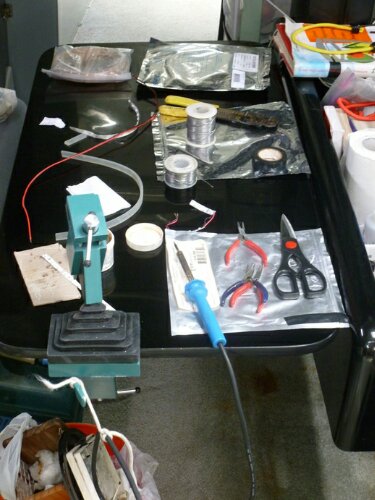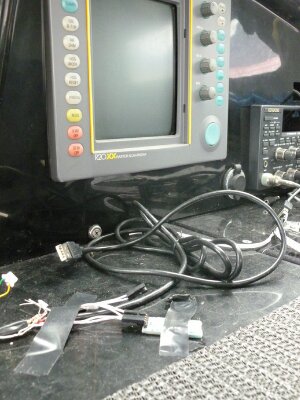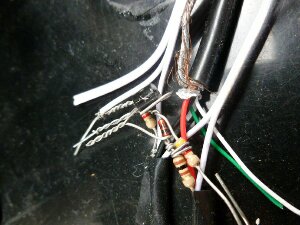I know of three types of mains voltage systems in the world: 100 Volts (Japan) and the 110-120 and 240-250 Volt systems (the Americas, China and a few other countries use the former, European countries and their former dependents use the latter). Illusion was built in the US and so endowed with a 120v system with American sockets. When I settled in New Zealand (a former British colony), I began Illusion‘s partial conversion to 240v…
It wasn’t that I suddenly needed 240 Volts on the boat, but when I bought something, it would be a 240v device. A hand blender, the recharger for a cordless drill, a soldering iron. Every mains-powered electrical device! At first, I just ran an extension cord into the boat, but after a while, that wouldn’t suffice. Illusion has an inverter aboard, which converts the battery electrical power to mains (in this case: 12 Volts DC into 120 Volts, 60 Hz AC), so I didn’t need shore power for most of the electrical systems already on the boat. She also has a 2500 Watt isolation transformer that separates the boat’s mains system from the vagaries of shore power. I won’t go into those details, but it’s mostly safety issues related to improper dock (or possibly a nearby boat) wiring.
That isolation transformer can be rewired to take 240V from shore and provide the boat with 120V (a “step-down” transformer”), but that doesn’t provide 240v outlets on Illusion; so I set about installing and wiring those, then connected them to Illusion‘s shore power input circuit. So the 240v outlets are not protected by the isolation transformer, but now I have both 120v and 240v outlets… when I’m connected to 240v shore power.
Last time that happened was at the haul-out yard in Mahurangi, New Zealand – April! In the four months since then, I’ve needed the soldering iron and was concerned that I might need to charge the cordlesss drill. I was able to solder using a horrible, dangerous butane-powered iron. Somewhere, there are photos of the gas jets spewing forth from this medieval torturous contraption! Nothing like that should ever obtain safety approval in a country like NZ! I’ve used other butane-powered soldering irons and they are safer and much less likely to ignite you or your surroundings.
Alas, this poor device ceased being useful just after I resoldered the propane solenoid wiring (in the anchor locker, at the bow of the boat). When I finished, while extricating myself from the anchor locker, the tip fell off and plummeted about 1 meter below the water, into a pretty coral garden beneath Illusion‘s bow. This was while moored to Rapa’s wharf, where her bow extended up and over the shallows. I had planned to snorkel for it, but the weather quickly deteriorated later that day and good weather never returned during my final 2 weeks there.
So this last Wednesday was 240 Volt Day aboard Illusion! I had a lot of projects (from my time on Rapa and later) that just needed a little soldering to complete, but I never had easy access.
I rewired my electrical system to feed the main inverter’s 120v output into the isolation transformer, and rewired the 240v outlets back to their “NZ” condition (I’d changed them to 120v while underway so we could plug in a Kiwi laptop charge cord for John’s MacBook).
Warning: don’t try this at home… I noticed an uncomrfortable tingling when I wiped the soldering iron’s tip on a piece of dry tissue paper. I was pretty sure I hadn’t swapped the “line” and “neutral” wires when I changed things, but clearly not! Apparently the soldering iron’s handle is grounded to protect against static discharges and that provided the complete circuit through me (and the paper tissue!).



